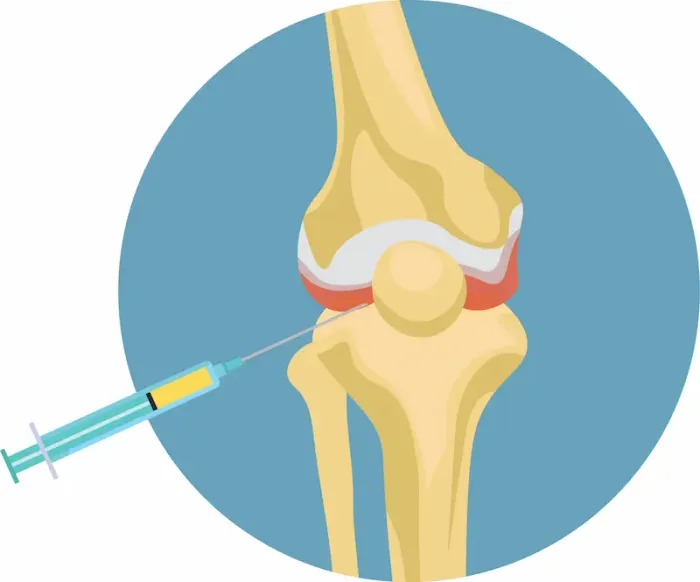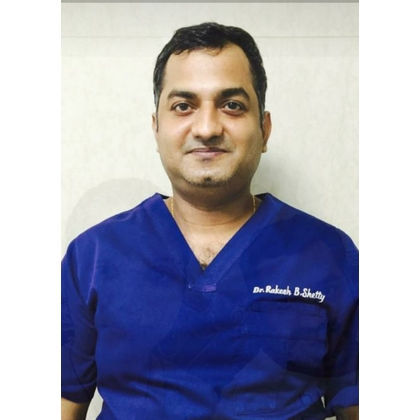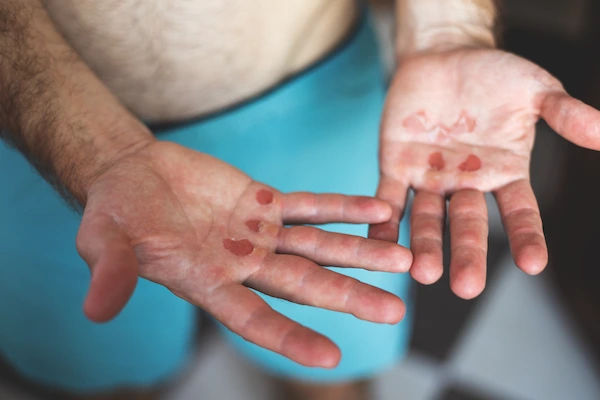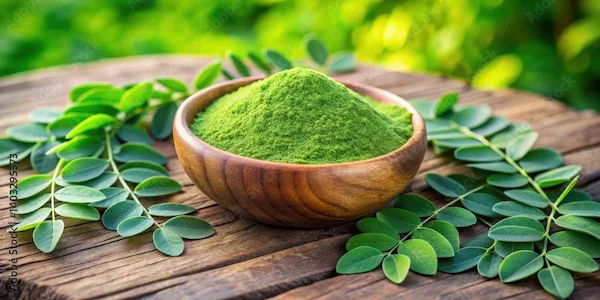PRP Injections for Joint Pain; A Comprehensive Guide
Discover how PRP injections work for joint pain, their benefits, risks, effectiveness, cost, and recovery timeline in this detailed guide.

Written by Dr. M L Ezhilarasan
Reviewed by Dr. Dhankecha Mayank Dineshbhai MBBS
Last updated on 3rd Oct, 2025

Introduction
Are you struggling with persistent joint pain that hasn't improved with rest, physical therapy, or medication? You're not alone. Millions seek alternatives to surgery or long-term painkiller use. Enter PRP injections, a cutting-edge treatment harnessing your body's innate healing power. Platelet-rich plasma (PRP) therapy has gained significant attention in orthopaedics as a promising, non-surgical option for conditions like osteoarthritis and tendon tears. But what exactly is it, and is it the right solution for you? This guide will demystify PRP injections for joint pain, walking you through the science, the procedure, the evidence, and what you can realistically expect. We'll explore how this regenerative treatment works to reduce inflammation and promote repair, helping you make an informed decision about your pain management journey. If your joint pain is holding you back, understanding the potential of these injections could be the first step toward reclaiming your mobility.
What Exactly Are PRP Injections?
PRP stands for Platelet-Rich Plasma. To understand it, let's break down the name. Plasma is the liquid component of your blood. Platelets are a type of blood cell best known for their role in clotting, but they are also powerhouses of growth factors—proteins that are crucial for healing damaged tissue. A PRP injection is a concentration of your own platelets suspended in a small amount of plasma.
The Science Behind Your Body’s Healing Power
The concept is elegantly simple: when you have an injury, your body sends platelets to the site to initiate repair. By creating a super-concentrated dose of these platelets and injecting them directly into an injured joint or tendon, doctors aim to kickstart and significantly amplify your body's natural healing process. Think of it as giving your joint a targeted boost of its own healing chemicals. This approach is part of a broader field known as regenerative medicine, which focuses on repairing or replacing damaged tissues rather than just managing symptoms.
How Do PRP Injections Alleviate Joint Pain?
The primary goal of PRP therapy is to change the environment within a painful joint. In conditions like osteoarthritis, the protective cartilage breaks down, leading to inflammation, pain, and stiffness. PRP works on multiple fronts:
1. Reduces Inflammation: The growth factors in platelets help modulate the body's inflammatory response, calming the chronic inflammation that causes pain and swelling.
2. Stimulates Tissue Repair: These growth factors signal the body to produce new, healthy cells. They can encourage the growth of new cartilage cells (chondrocytes) and strengthen damaged tendons and ligaments.
3. Promotes Angiogenesis: This is the formation of new blood vessels, which improves blood supply to the injured area, delivering more oxygen and nutrients essential for healing.
The Step-by-Step Healing Process
After the injection, the concentrated platelets are activated at the injury site and release their growth factors. This triggers a cascade of biological events over several weeks and months, including cell proliferation and the formation of new, healthier tissue. It's not an instant fix but a process that guides the joint toward long-term improvement. For chronic conditions like a rotator cuff tear, this can mean strengthening the tendon and reducing the pain associated with movement.Consult a Orthopaedic Doctor for the best advice
Common Joint Conditions Treated with PRP Therapy
PRP is used for a variety of musculoskeletal issues. Its most common applications include:
Osteoarthritis of the Knee, Hip, and Shoulder
This is one of the most researched uses for PRP for osteoarthritis. Studies have shown that PRP can be more effective than hyaluronic acid injections (a traditional lubricating injection) in reducing pain and improving function in knee osteoarthritis, with effects lasting a year or more in some patients.
Chronic Tendon Injuries (Tendinopathies)
These are conditions like tennis elbow (lateral epicondylitis), golfer's elbow, jumper's knee (patellar tendinitis), and Achilles tendinitis. PRP has been particularly successful for these stubborn injuries that often don't respond well to other treatments.
Ligament Sprains and Sports Injuries
Athletes often use PRP to accelerate healing from acute injuries like knee MCL or ankle sprains. It's also investigated for more severe injuries, such as partial tears of the Achilles tendon or ulnar collateral ligament (UCL) tears in baseball players (often known as "Tommy John surgery" prevention or treatment).
The PRP Injection Procedure: What to Expect
The entire process typically takes about 60–90 minutes and is performed in a doctor's office.
Step 1: The Blood Draw
Just like a routine blood test, a small amount of blood (usually 15–60 millilitres) is drawn from a vein in your arm.
Step 2: Centrifugation to Create PRP
The blood vial is placed in a centrifuge, a machine that spins at high speed. This spinning process separates the blood into its components: red blood cells, platelet-poor plasma, and platelet-rich plasma. The doctor then extracts the concentrated PRP.
Step 3: The Injection Itself
The target area (e.g., your knee) is cleaned and often numbed with a local anaesthetic. Using ultrasound or fluoroscopic guidance to ensure precise placement, the doctor injects the PRP directly into the damaged joint or tendon. The guidance is crucial for maximising the treatment's effectiveness.
Benefits and Advantages of Choosing PRP
The appeal of PRP lies in its unique benefits:
• Minimally Invasive: It's an injection, not surgery, meaning no general anaesthesia, no large incisions, and a much lower risk of infection.
• Uses Your Own Body: Because PRP is autologous (from your own blood), there is virtually no risk of allergic reaction or rejection.
• Potential for Tissue Regeneration: Unlike steroid injections that merely mask pain, PRP aims to heal the underlying damage.
• Reduced Downtime: Compared to surgery, recovery is significantly faster, allowing you to return to daily activities sooner.
• May Delay Surgery: For some patients, successful PRP therapy can provide lasting relief, potentially avoiding or postponing the need for joint replacement surgery.
Potential Risks and Side Effects of PRP Injections
PRP is generally considered very safe. However, as with any injection, there are potential risks:
• Infection: A small risk at the injection site.
• Tissue Damage: Rare, but the needle could potentially damage a nerve or blood vessel.
• Increased Pain Initially: It's common to experience a temporary increase in pain and inflammation for the first few days after the injection as the healing process begins. This is often a sign that the treatment is stimulating a response.
• No Improvement: There is a chance the treatment may not work for everyone.
The long-term side effects of PRP are not fully known, but because it uses your own biological material, the risks are considered lower than with many pharmaceutical treatments.
How Effective is PRP for Joint Pain? A Look at the Evidence
The effectiveness of PRP is an active area of research. Overall, evidence is promising but mixed, and results can vary based on the condition, the patient's overall health, and the specific PRP protocol used. A 2019 meta-analysis in the Journal of Orthopaedic Surgery and Research concluded that PRP injections were more effective than placebo and hyaluronic acid for knee osteoarthritis in terms of pain and function up to 12 months. However, the American Academy of Orthopaedic Surgeons states that while evidence is growing, more high-quality studies are needed to standardise treatment and fully confirm its efficacy compared to other interventions.
The Recovery Timeline After a PRP Injection
Recovery is a critical part of the process. If your pain or swelling seems excessive or worsens significantly after the first week, it's important to consult a doctor. You can book a physical visit to a specialist with Apollo24|7 for a follow-up evaluation.
The First 48 Hours: Rest and Inflammation
You will be advised to rest the injected joint. Avoid anti-inflammatory medications (like Ibuprofen or Naproxen), as they can interfere with the very inflammatory healing process that PRP is designed to initiate. Ice can be used to manage swelling.
Weeks 1–6: Gradual Return to Activity
After the initial rest period, your doctor will likely recommend a course of physical therapy. This is essential to strengthen the muscles around the joint, improve range of motion, and ensure the new tissue heals correctly. Full benefits are typically felt between 2 to 6 months post-injection.
Is PRP Therapy Right for You? Identifying a Good Candidate
Ideal candidates for PRP generally include:
• Individuals with mild to moderate osteoarthritis or a chronic tendon injury.
• Those who have not found sufficient relief from conservative treatments like physical therapy, rest, or pain medication.
• People who are looking for a non-surgical alternative.
• Patients in good overall health without certain blood disorders or active infections.
• Non-smokers, as smoking can impair healing.
PRP may not be suitable for patients with severe bone-on-bone arthritis, certain autoimmune diseases, or those on blood thinners.
PRP vs. Other Treatments: How It Compares to Cortisone and Hyaluronic Acid
• PRP vs. Cortisone: Cortisone is a powerful anti-inflammatory steroid that provides rapid pain relief (within days) by suppressing inflammation. However, its effects are temporary (weeks to months), and repeated use can potentially damage cartilage. PRP has a slower onset but aims for long-term healing by promoting repair.
• PRP vs. Hyaluronic Acid (HA): HA injections act as a lubricant and shock absorber for the joint, "oiling" a stiff knee. They provide symptomatic relief for osteoarthritis. PRP is thought to be more bioactive, directly influencing the joint's biology to reduce pain and improve function, with some studies suggesting longer-lasting effects.
The Cost of PRP Injections and Insurance Considerations
The cost of PRP therapy can be significant, typically ranging from £400 to £2,000 per injection. A major factor is that PRP injections for musculoskeletal conditions are often considered elective or investigational by many insurance companies and may not be covered. It is crucial to check with your insurance provider and your doctor's office about insurance coverage and out-of-pocket costs beforehand.
Conclusion & Next Steps
PRP injections represent a fascinating and powerful shift in managing joint pain, moving from simply suppressing symptoms to actively encouraging the body to heal itself. While not a miracle cure, they offer a viable, minimally invasive option for many patients struggling with conditions like osteoarthritis and chronic tendonitis. The key to success lies in having realistic expectations, choosing an experienced practitioner, and committing to the recovery and rehabilitation process.
If you are considering PRP, the most important step is to have a detailed conversation with a qualified orthopaedic specialist. They can evaluate your specific condition, discuss your medical history, and determine if you are a good candidate. If you're ready to explore whether PRP could be the solution for your joint pain, consult an orthopaedic specialist online with Apollo24|7 to get personalised advice and guidance. Taking an informed step today could lead to a more active and pain-free tomorrow.Consult a Orthopaedic Doctor for the best advice
Consult a Orthopaedic Doctor for the best advice

Dr. Manoj Dinkar
Orthopaedician
15 Years • MBBS, Dip (Orthopaedics)
New Delhi
THE DOCTORS NESST, New Delhi
Dr. Anil Sharma
Orthopaedician
42 Years • MBBS, MS Orthopedics
New Delhi
AAKASH MEDSQUARE, New Delhi

Dr. Padam Singh Gautam
General Physician/ Internal Medicine Specialist
43 Years • M.B.B.S (WARDHA M. S.), F.A.G.E. (MANIPAL), F.A.I.M.S. (Pb.), M.A.I.M.S. (Pb.), M.R.S.H. (LONDON)
Noida
Dr Padam Singh Gautam Fracture Clinic, Noida
(50+ Patients)

Dr. Rakesh Shetty
Orthopedics-Sports Medicine
18 Years • MBBS, DNB ( Orthopaedic) Certified in spine and joint Replacement Surgeon.
Chennai
Apollo Hospitals Greams Road, Chennai
(100+ Patients)

Dr. Samir Basak
Pain Management Specialist
15 Years • MBBS, MD Anaesthesiology
Kolkata
Dr. Samir Basak's Chamber, Kolkata
Consult a Orthopaedic Doctor for the best advice

Dr. Manoj Dinkar
Orthopaedician
15 Years • MBBS, Dip (Orthopaedics)
New Delhi
THE DOCTORS NESST, New Delhi
Dr. Anil Sharma
Orthopaedician
42 Years • MBBS, MS Orthopedics
New Delhi
AAKASH MEDSQUARE, New Delhi

Dr. Padam Singh Gautam
General Physician/ Internal Medicine Specialist
43 Years • M.B.B.S (WARDHA M. S.), F.A.G.E. (MANIPAL), F.A.I.M.S. (Pb.), M.A.I.M.S. (Pb.), M.R.S.H. (LONDON)
Noida
Dr Padam Singh Gautam Fracture Clinic, Noida
(50+ Patients)

Dr. Rakesh Shetty
Orthopedics-Sports Medicine
18 Years • MBBS, DNB ( Orthopaedic) Certified in spine and joint Replacement Surgeon.
Chennai
Apollo Hospitals Greams Road, Chennai
(100+ Patients)

Dr. Samir Basak
Pain Management Specialist
15 Years • MBBS, MD Anaesthesiology
Kolkata
Dr. Samir Basak's Chamber, Kolkata
More articles from General Medical Consultation
Frequently Asked Questions
1. How long does a PRP injection last?
The effects can vary. Some patients experience relief for over a year, while others may need follow-up injections after 6–12 months. It depends on the severity of your condition, your activity level, and your body's response.
2. Are PRP injections painful?
The injection itself can be uncomfortable. The joint is often numbed with a local anaesthetic first. It is common to experience a significant increase in pain for the first 3–7 days after the injection as the inflammatory healing process begins.
3. How many PRP injections are needed?
Many patients achieve good results with a single injection. However, for more chronic or severe conditions, a series of two or three injections, spaced a few weeks apart, may be recommended.


.webp)
_3.webp)
